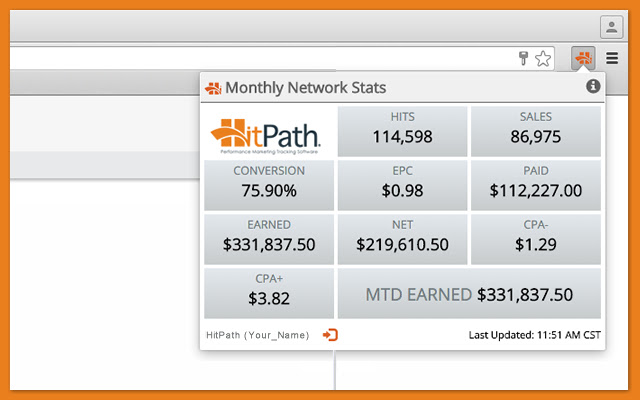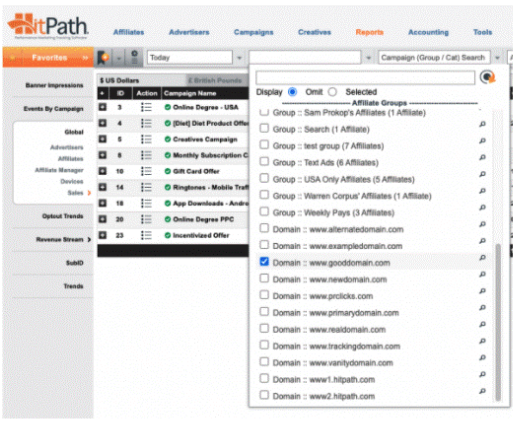Cross-Device Tracking: Users frequently switch between multiple devices when making purchasing decisions. Attribution becomes difficult when marketers struggle to link the same user across their smartphone, tablet, and desktop. Accurately attributing conversions to the correct affiliate can be a daunting task.
Cross-device tracking refers to the practice of monitoring and linking a user's online activities as they switch between different devices, such as smartphones, tablets, and desktop computers. It enables marketers to gain a holistic understanding of the customer journey and their interactions with marketing touchpoints across various platforms. Cross-device tracking can be challenging due to user privacy concerns and the increasing limitations imposed by web browsers on cookie-based tracking.
Cookie Limitations: As mentioned in your previous article, browsers and operating systems are becoming more restrictive when it comes to cookies. This hinders the ability to track users seamlessly across devices and can lead to incomplete or inaccurate attribution.
Cookie Limitations: Cookies are small pieces of data stored on a user's browser that are used for tracking online behavior. However, many web browsers are limiting or blocking third-party cookies to protect user privacy. These limitations affect marketers' ability to track and attribute conversions accurately. It's important to explore alternative tracking methods and adapt to these changes in the cookie landscape.
Time Lag in Conversions: Customers often have a significant time lag between their initial interaction with an affiliate's content and their final purchase. This lag can vary greatly and makes it challenging to attribute the sale to the right affiliate, particularly in cases where multiple affiliates are involved in the customer's journey.
Time lag in conversions refers to the delay between a user's initial interaction with an affiliate's content (e.g., clicking on an ad) and their final purchase. This lag can vary widely, from minutes to weeks, making it challenging to attribute the sale to the correct affiliate. Understanding the typical time lag in your industry or niche is essential for accurate attribution.
Attribution Models: There's no one-size-fits-all attribution model. Marketers must choose between first-click, last-click, linear, or custom attribution models. Deciding which model to use can be challenging, as different models can favor different affiliates, and there is no universally accepted standard.
Attribution models are rules or methodologies used to assign credit for a sale or conversion to different marketing touchpoints in a customer's journey. There are various models, including first-click, last-click, linear, and custom models. Each model provides a different perspective on how marketing channels contribute to conversions, and choosing the right model depends on your specific goals and priorities.
Ad Blockers: Ad blockers can prevent tracking scripts and cookies from functioning correctly, potentially leading to incomplete or inaccurate attribution. This is particularly problematic for affiliates who rely on banner ads or other advertising methods.
Ad blockers are software or browser extensions that prevent the display of online advertisements and can also block tracking mechanisms, including cookies. This can disrupt the accuracy of attribution by limiting the data available to marketers.
Data Privacy Regulations: The rise of data privacy regulations like GDPR and CCPA has introduced new complexities in tracking and attribution. Marketers need to ensure they are collecting and using customer data in compliance with these regulations.
Data privacy regulations like GDPR (General Data Protection Regulation) and CCPA (California Consumer Privacy Act) are legal frameworks that require organizations to handle user data with care and transparency. These regulations have implications for how user data is collected, stored, and processed for attribution purposes, and non-compliance can result in significant fines.
User Authentication: Users often browse websites without being logged in, which makes tracking and attributing their actions more challenging. Marketers may rely on probabilistic methods or require users to log in, which can affect the user experience.
User authentication involves the process of users logging into a website or app using their unique credentials, such as usernames and passwords. This authentication method allows for more accurate tracking and attribution because the user's actions and interactions can be tied to a specific user account. However, not all users choose to log in, so it's essential to implement both authenticated and non-authenticated tracking strategies to cover a broader audience.
Device Fingerprinting: While a solution to cross-device tracking, device fingerprinting has its challenges, including accuracy issues and user privacy concerns. Marketers must navigate these complexities to ensure fair attribution.
Device fingerprinting is a technique used to identify devices based on a unique set of attributes such as screen resolution, browser configuration, and device type. It's valuable for cross-device tracking but has limitations in terms of accuracy and potential privacy concerns.
Affiliate Fraud: Fraudulent affiliate activity is a common issue. Affiliates may engage in click fraud or other illegitimate practices to gain undeserved commissions. Marketers need robust fraud detection mechanisms to ensure accurate attribution.
Affiliate fraud refers to illegitimate activities carried out by affiliates to earn commissions they haven't legitimately earned. This can include practices like click fraud, cookie stuffing, and creating fake leads. Detecting and preventing affiliate fraud is crucial for maintaining the integrity of attribution and ensuring that affiliates are rewarded fairly.
Fragmented Customer Journey: Users often interact with various marketing channels and affiliates before making a purchase. The customer journey can be highly fragmented, making it challenging to attribute the sale accurately to a single affiliate.
The fragmented customer journey refers to the non-linear path that users take through various marketing channels and affiliates before making a purchase. Attribution challenges arise because customers may interact with multiple touchpoints and affiliates, making it essential to implement multi-touch attribution models.
Lack of Standardization: The affiliate marketing industry lacks standardization in tracking and attribution methods. This can result in inconsistencies and disputes among affiliates, networks, and brands.
The affiliate marketing industry lacks standardization in tracking and attribution methods, leading to inconsistencies in how affiliates, networks, and brands approach attribution. This lack of standardization can result in disputes and challenges in establishing common attribution practices.
Evolving Technology: The rapid pace of technological change can pose challenges. New devices, platforms, and tracking methods constantly emerge, requiring marketers to adapt and update their attribution strategies.
Evolving technology is a constant challenge as new devices, platforms, and tracking methods emerge. Marketers must stay up-to-date with the latest technology trends and adapt their attribution strategies to ensure they remain effective in tracking and attributing conversions.
In light of these challenges, affiliate marketers must continually refine their attribution strategies, implement advanced tracking technologies, and adopt a flexible approach to adapt to the evolving landscape of online sales attribution across devices.





